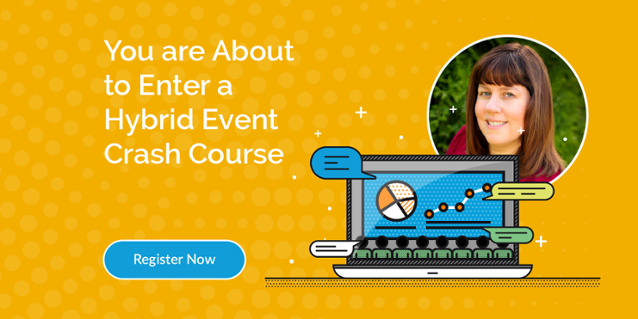For some people, giving a presentation is as easy as pie, they find it exciting and in many cases liberating. But, then there are others, who consider giving a presentation in front an audience, nothing less than a nightmare.
It doesn’t matter whether you are an extrovert or an introvert, the need to organise your thoughts and present it engagingly is an essential fabric of communication.
Along with using the best presentation tools, you have to understand the psyche of your audience to make them see, listen, and understand your opinions. To attract the attention of your audience, use clever mind tricks that can make your presentations far more intriguing.
Here are a few psychology hacks you can use, to deliver a top-notch presentation.
1. Make it larger than life
Tell your audience how your presentation can change their life, or better yet, how it can modify the world and before you know it, you have everybody’s attention.
Human beings are emotional creatures, and when a particular feeling is triggered, we create memories and a mental connection to the source, in this case - you and your presentation.
Say, you are giving a presentation on ‘Business ethics’, you associate the theme of the presentation to higher moral virtues. This triggers emotions among the audience because as humans we prefer and applaud acts of righteous.
Takeaways
- Humanise the theme of your presentation
- Tell your audience how it will change their lives, and empathise on the certainty that their lives will change
2. Build trust by showing your imperfections
Perfection, though desirable, can act as a trust breaker at times. People are suspicious of other individuals who try to project a perfect picture, and it leads to the idea of possible deception. For an audience to engage with you, win their trust by showing your flaws and making them believe that you are just as imperfect as they are.
Expressing certain flaws can make you more believable. At the same time, bare your weaknesses adequately. It’s good to show you are flawed but not to the point that you might be ridiculed.
To understand the tipping point, map your audience within the thirty seconds of starting the presentation. Once you get a vibe of the audience, you have a better idea of how much to expose.
For example; say your topic is ‘How to be happy’, start your presentation with expressing the idea that you don’t know what it takes to be happy. Encourage the audience to partner with you to figure out how to be happy. An excellent way to do this is by using Glisser's word cloud, simply ask the audience to select three words that they associate with happiness. Empathy triggers instant trust with audience members, and they will be more inclined to hear what you have to say.
Takeaways
- Don't show superiority by painting a picture of perfection. Use empathy, it's more potent to trigger trust
- There is nothing better than showing your flaws with humour and wit
3. Use fear and shock to create intensity
Create a context which perpetuates fear and shock conditioning of the mind. It’s the same psychological hack used in horror movies - the backdrop is created to spread fear and shock in order to make the climax intense and engaging.
Pump the adrenaline of your audience by showing them something unexpected or scary as fear is one of the most powerful unconditional stimuli which triggers instant attention. But be careful of not falling prey to using unethical fear tactics, that might backfire.
Say you are highlighting the ill effects of obesity among children. In the middle of the presentation, you show an image which highlights the grave dangers that obese kids inherit, shocking as it may be, you have caught everyone’s attention.
Takeaways:
- Fear and shock are instant attention grabbers
- Express what you can save over what you can give
4. Data storytelling
Numbers tell a story in a clear and convincing way. They make your presentation seem authentic and creates an instant connect with the audience. Weave your story with data in such a way that it looks genuine, and at the same time, it does not bore the audience with overwhelming numbers and charts.
Visuals amplify the effect of both your narrative and data. It helps you to register certain insights in the minds of the audience. Charts and graphs present data in beautiful variant patterns, which otherwise would have been lost in the vastness of complex tables.
To facilitate data storytelling through charts and graphs, use Google Sheets. It provides a host of options, where you can customise charts according to your needs. Moreover, share these charts with your audience members and encourage them to participate in the storytelling process.
Or you could include a Glisser poll, and ask your audience to interact. This method is also an excellent way to gather valuable data on your participants, for post presentation follow up or simply to improve the content for future use.
Takeaways:
- Use data wisely, do not clutter your presentation with too many visuals
- Create a narrative which fully justifies the data. A distortion in your storytelling and your charts can make it difficult for everyone to understand the relevance of the data
5. Set the right amount of expectation
The anchoring effect props people to base their decisions on the first piece of information they get. It’s a popular tactic used by marketers to attract consumer’s attention.
Initially, give information that will anchor the expectation, from where you can offer more insights which might exceed their expectation, therein lies the opportunity to kindle audience’s attention.
Say, you are giving a product presentation to prospects, to make it engaging, first market the features (that’s your anchor), and then immediately give benefits. The reason this works is that a good piece of information is preceded with a better one, which communicates a higher value than expected.
Takeaways:
Make your presentation relative, not absolute. You don’t want your audience to think you are the best presenter in the world, the expectations can be overwhelming, but, being the best presenter in your team, that’s a safe zone.
Winding up
To deliver a top-notch presentation, the first thing you need to do is to be seen, use the above psychological hacks to catch your audiences attention. After that, it’s important to build trust, it makes your presentation seem more legitimate. And finally, engage them - use emotions, data or just your natural charm to keep them hooked through the entire presentation.

